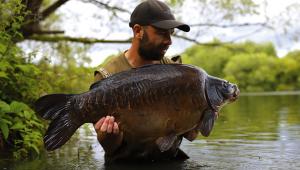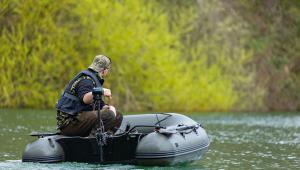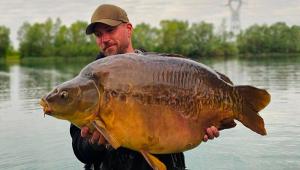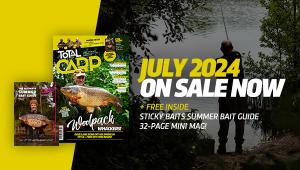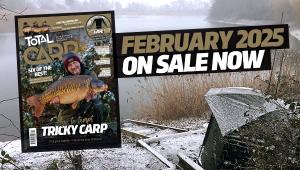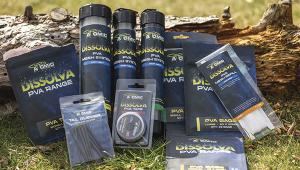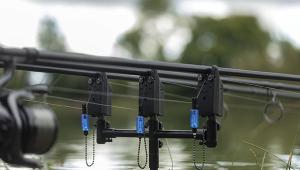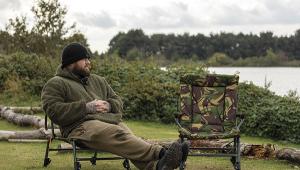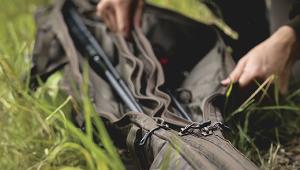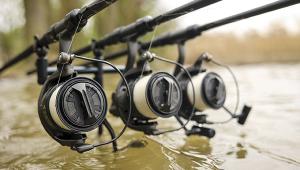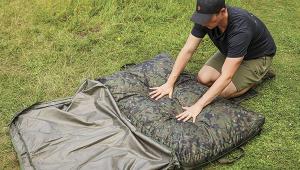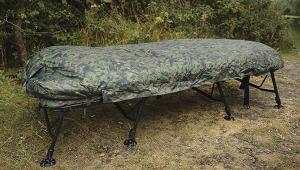INSIDE THE MIND | Autumn-Winter Transition
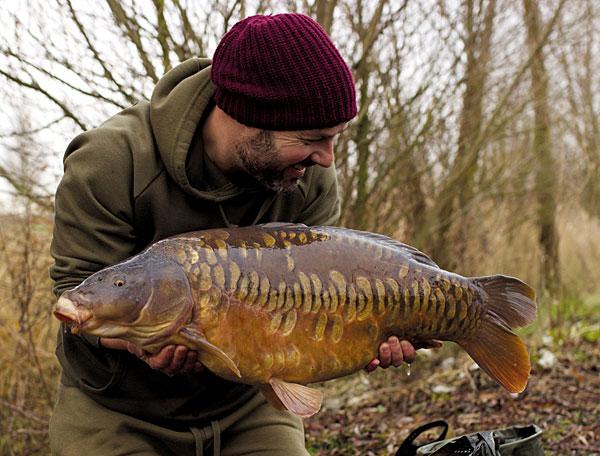
I change a lot in my fishing when we go from autumn into winter and the first subject I want to talk about is location. The key thing that you will notice is that the most important advice of getting to the lake for first light is not as watertight as it is for most of the year.
From late October to the depths of winter, the carp’s habits become very nocturnal. You can see them at dawn, but quite often that is in the aftermath of what has happened. If the lake is flat calm on dawn and there is an area of frothy bubbles, this is often the result of carp showing. If it is in lines, this is normally where the birds have been fighting.
I have found that around 2am is the key time, and this obviously varies on lakes, but that unsociable hour is often when the carp are most active. It is so typical of the carp’s behaviour and I can think of the majority of my winter fishing being more productive for shows and bites during the hours of darkness. If you can, set the alarm and listen for half an hour or so, it really can pay off while you are trying to track them down.
More importantly than in the warmer months, being on the carp will be the difference between catching or not. In the warmer months the fish will be moving round a lot, whereas when the water cools down, the fish will often be congregated in an area and you have to do your utmost to get in it.
One thing I would say is forget all the rules of fishing deep, silty channels and so on. Fish where you see the carp – they may be showing around a shallow hump on the end of a freezing cold wind and just because you think they shouldn’t be there doesn’t mean you should avoid it. Go and fish where the fish are telling you to, even if it is in a bizarre area that you wouldn’t expect them to be in.
There are no rules when it comes to location because all lakes are different and the carp, being a wild creature, will always surprise you. Locational principles are just guidelines, even what I have said about them being nocturnal; it won’t be the case everywhere but in my experience this is what I have witnessed.
There is one rule that I have found has always been true wherever I have fished, and that is the impact a large weed bed has. I have always found that if you have one large weed bed and there is no weed anywhere else, the carp will be drawn to it. It is a safe haven for them and often still full of naturals, especially in the autumn.
Adam believes that the carp will often hold up in the large weed beds in late autumn.
If the weed isn’t present, look where the coots are feeding as they will often be using the largest weed bed to harvest the food. If they dive down and pop straight back up, it tells you that they don’t have to go far. Equally if the swans are pecking at it, you know it isn’t far to the top of the weed bed.
Another good way of finding carp is having a lead around with a small lead, and you can often feel the fish on the way down to the bottom. This doesn’t always happen but pay extra care and attention to feeling your drops as the fish are much more dormant and their reactions slow down, so sometimes the lead can drop on their backs.
The next transitional step is bait. It is my belief that on the majority of waters, the period of October and November can be the hardest. This is for two main reasons; firstly the absolute profusion of natural food. I would argue that there is more natural food now than any time of year. If you look around you and absorb nature, there is more food available on the banks than at any other time of year and I think the same goes for lakes. Nature has its way of providing enough food larder to help the animals sustain over the winter months.
The carp will be harvesting the natural larder in the lake.
I was wading yesterday and the snails and bloodworm were off the scale, which tells you what the carp are going to be focused on eating. If you couple this with my second point, which is pressure, you get to the point where fish don’t necessarily have to take the risk of eating our bait. In the old days, this is when we used to pile in the bait, ready for that big autumn feed-up.
Well times have changed and the banks are a lot busier, putting the fish seriously under pressure. What’s more, they have been fed a healthy and rich diet of high-quality food all season, so they are often at their optimum weight by the end of September.
A 26lb Sandhurst mirror caught while the lake was fishing really hard and the fish undoubtably feeding on naturals.
I saw this first-hand at Sandhurst Lake last autumn. There was a five-week period where there were only seven carp caught from the lake. Two of those captures were from anglers fishing with water snails and the other bites were from myself, on a mix of finely chopped boilies and natural products, which was totally different to what everyone else was using.
When you think how busy that lake is, how many blank rod hours went in to that lake and nobody caught on a pink pop-up on a Ronnie rig or anything remotely predictable, that tells you that the fish were not prepared to take the risk of eating bait and went on to the naturals.
From now, maggots and casters play a big role in my fishing. I will always complement those naturals with some boilie crumb, small pellets and liquids. This is a mix that will work anywhere, but I wouldn’t fish that mix on a lake that is full of bream.
A broken Krill boilie mix, supplemented with natural liquids are his favoured autumn tactic.
Most people will be using boilies, and if they are not catching that tells me that you need to do something different. A straight boilie approach will work and I have used it to great success in the past, but again it is venue specific. I have found that in the autumn, I use a meaty, fishy mix of Krill boilie crumb, some smelly liquids and then complement that with some naturals. The Fish Sauce and Liquid Liver are two very pungent and, more importantly, natural liquids that work extremely well.
As we move into the winter, I like to use a sweeter mix, changing my boilies to Manilla and complementing that with the Cloudy Manilla Liquid, again adding my naturals where allowed. One thing that I have had really good success on is heating some condensed milk up in a pan with some of the Cloudy Manilla, just enough to make it warm and bind the liquids together, before pouring it on my boilie crumb.
I then fold the liquid into the crumb that I have ground down in my Kenwood food processor. I want it so that it is damp enough that it will hold when I squeeze it together, but not hold should it be touched. This differs massively from the autumn mix, which mainly consists of chopped and whole baits with a bit of crumb.
I did play around with my fishy mix in the winter last year and caught well, but anywhere that I feel I will be using more than just a bag or a couple of Spombs, I think that cloudy, sweet Manilla mix is the one.
Quantities change too and although I wouldn’t normally go heavy in the autumn, there are times when I do. In the winter, I reduce the amount of bait that I use. A mix of small items like boilie crumb and maggots carries lots of food items without putting a lot out. A few Spombs accurately put to the spot are enough to get a bite.
I think it is really important to bait accurately as the fish won’t be moving around a lot in the winter. I try and put all my bait on top of the rigs, just so that when they do feed, my hook bait will be over it.
The next subject we will talk about is rigs. They are very sight-specific and there is no doubt in my mind that on pressured lakes when the water is really cold, you will get more bites by fining down your tackle. This is true of every species and I have even heard of people using heavily coated 80lb braid instead of a wire trace because the pike are so cagey.
This is and has to be the case with carp too. Yes, people catch on size 4 hooks, but that doesn’t mean it is the most effective way of catching them. I think that small hooks and lighter hook links will get you more bites. You can only do this though when you are able to land the fish, which would be a problem in the autumn while the weed is still up.
On a lot of the lakes that I tend to fish in the winter, generally they don’t have too much weed in the colder months. So, dropping down to a size 10 hook, 10lb hook link, a small bag with a sliver of hook bait is not an issue. There have been loads of situations in my angling past where I believe that scaling down my end tackle would have got me a bite, but I couldn’t due to the nature of where I was fishing.
Scaling down your end tackle will often get you more bites in the cold.
Adam is a big fan of using smaller hook baits.
There is no point in hooking them if you can’t land them and we as anglers have a responsibility to make the right call on whether it is safe to do so. The less active the fish are and more carefully and delicately they are feeding, the more it will pay off to scale everything down and this is my go-to method in the winter.
I also use smaller hook baits and I am sure that at all times of year, when fishing for cagey fish this gets you more bites. You will get bites on big hook baits, but I think a smaller one will be taken more readily. I like to use a pop-up or a wafter and trim it right down so that it is sometimes only 8mm in size.
I will always hook on a small mesh bag of the matching mix too, mainly to prevent tangles but also have that small parcel of food around the hook bait. Sometimes this is all I fish, just casting PVA bags to an area to keep disturbance to a minimum. If you look at a golf ball sized bag of crumb melted in the margins, you will see that it is often more than enough to get a bite in the colder months.
I also fish with a tighter line in the winter, because I get better sensitivity on the buzzers and I can pick up liners easily. If you get on fish in the winter, you will get liners. They can be key to knowing if you are on the fish.
I am talking about a 24-hour period, as they could be up in the water during the afternoon. If you have no liners in 24 hours, I would say that you are in the wrong spot.
Picking the right venue for winter is important too.
- Log in or register to post comments
